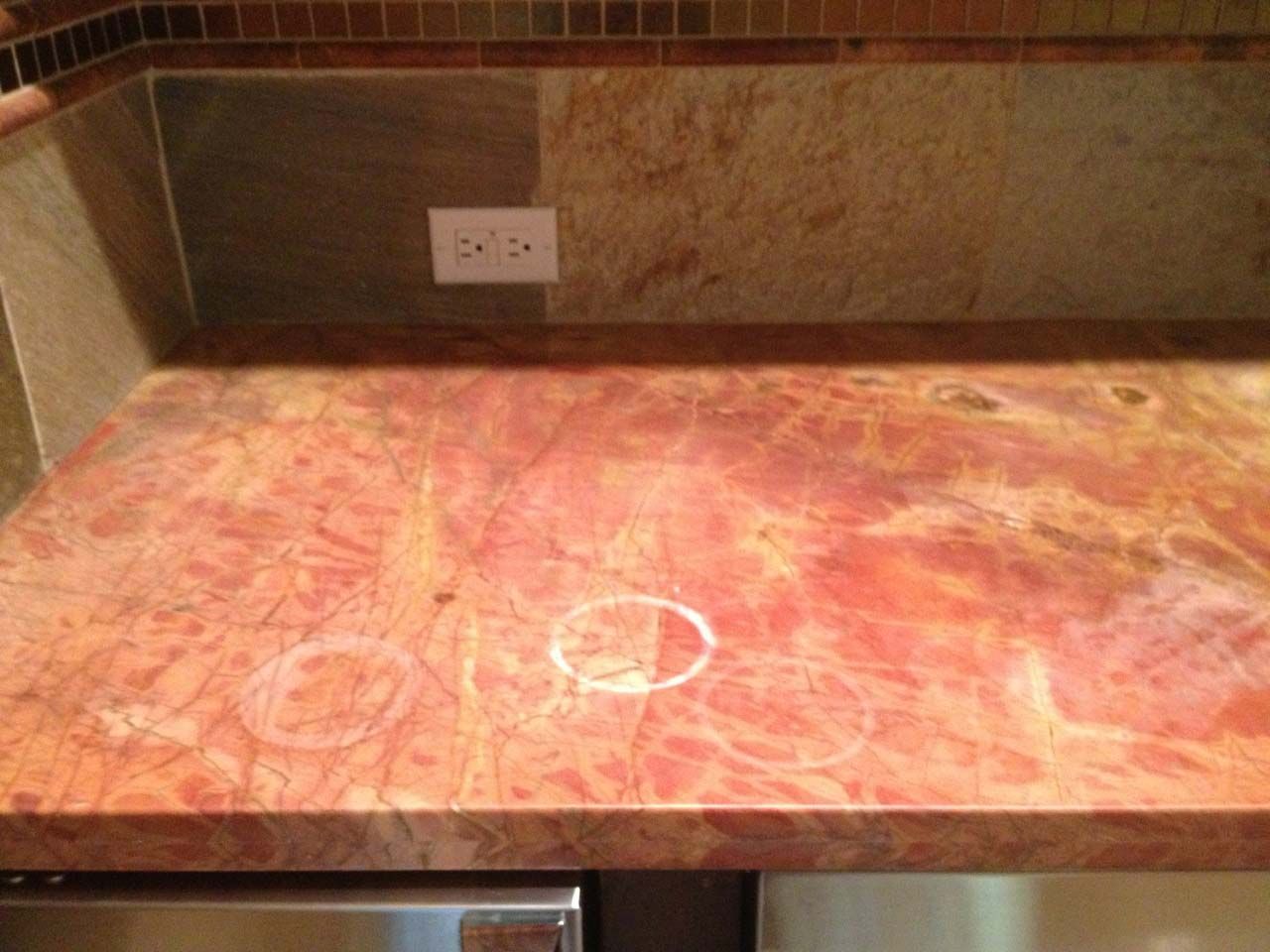Marble Etch Removal: What Causes Etching and How to Fix It Professionally

Marble Etch Removal: Why DIY Doesn’t Work and What Actually Fixes It
If you’ve noticed dull spots or ghost-like rings on your marble countertop, vanity, or table, you’re likely dealing with etch marks. These aren’t stains — and trying to treat them like one often makes the problem worse. In this post, we’ll explain what etching is, why it happens, what not to do, and how a professional can restore the surface properly — often with the option of long-term protection.
What Is Marble Etching?
Etching happens when acidic substances react with the calcium carbonate in marble. This chemical reaction eats into the surface, leaving it dull, discolored, or rough to the touch. It’s not just on the surface — the top layer of the marble is physically eroded.
Common causes of etching include:
- Lemon juice or citrus
- Vinegar
- Wine
- Coffee
- Toothpaste
- Harsh cleaners
- Many disinfecting wipes
Unlike stains, which darken the marble, etch marks usually appear lighter or hazier. They’re often ring-shaped or splattered, depending on what caused them.
Etch vs. Stain: Know the Difference
One of the most common mistakes is confusing an etch mark with a stain. It matters because the treatments are completely different:
- Stains: Caused by absorption of pigment or oil. Marble becomes darker.
- Etches: Caused by chemical erosion. Marble becomes lighter and dull.
Trying to remove etch marks using stain removers or scrub pads won’t help — and can cause more damage.
Why DIY Etch Removal Fails
Search online and you’ll find dozens of DIY tips, from polishing powders to baking soda pastes. These might reduce the appearance of an etch on honed marble, but they rarely work on polished surfaces.
The real problem is that etch removal isn’t just about touching up the spot — it’s about matching the finish across the entire surface. Marble is highly reflective. If you try to polish just one area, you’ll often end up with a shiny patch that looks worse than the original etch.
Consumer-grade products don’t have the control or abrasives needed to fix the surface properly. And without knowing the exact type of marble and finish, you can easily create swirls, uneven reflection, or over-polish the area.
How Professionals Remove Etch Marks
A trained marble restoration specialist will assess the depth of the etch and determine the right method. This usually involves:
- Using marble-specific diamond abrasives or pads
- Carefully resurfacing the affected area
- Blending the polish to match the surrounding finish
- Resealing or recoating the surface
Professionals don’t just "buff it out" — they restore the uniform texture and shine so the repair is invisible. Every marble type has different properties, and fixing it correctly requires experience, precision tools, and the right polish formula.
How to Prevent Etching in the Future
Marble is vulnerable — even with good habits like using coasters and wiping spills quickly. That’s why many homeowners now choose anti-etch coatings for high-use areas.
These coatings form a clear, protective barrier that:
- Prevents acids from reaching the marble
- Resists staining and dulling
- Preserves both polished and honed finishes
- Lasts up to 10 years with proper maintenance
Unlike sealers (which only slow down absorption), anti-etch coatings physically block acidic substances from reacting with the stone. The coating is professionally applied and dries with a natural look — you won’t even know it’s there.
When to Call a Professional
If your marble has etch marks, it’s important to stop and assess. Trying to polish or fix it yourself can cause uneven reflection, haze, or permanent texture issues. Spot repairs without the right tools lead to inconsistent results and often cost more to fix later.
A professional will:
- Identify whether you have etching or staining
- Restore the finish to match the surrounding area
- Offer protective options like anti-etch coating or sealing
Final Thoughts
Marble is a premium material, but it needs premium care. Etch marks are a clear sign that the stone has been chemically damaged — and no household cleaner or off-the-shelf product will truly fix it. If you're seeing dull spots or rings, especially in areas like kitchens or bathrooms, the best solution is to have the surface professionally restored and protected.
Need help with marble etch removal or protection?
Don’t guess — let a specialist assess the damage and restore your marble the right way.


